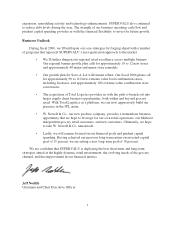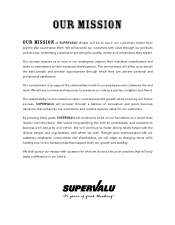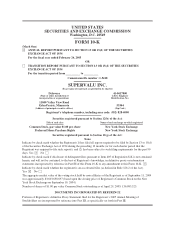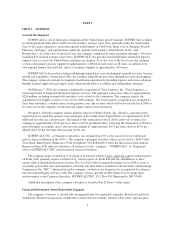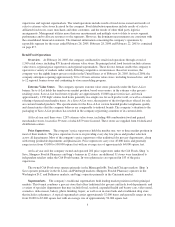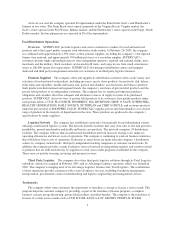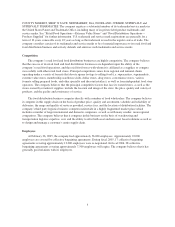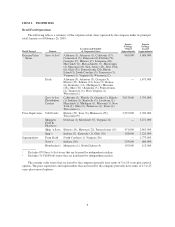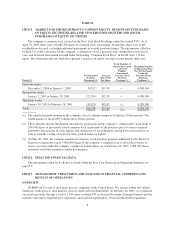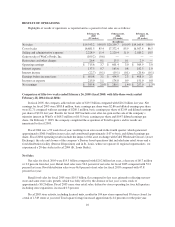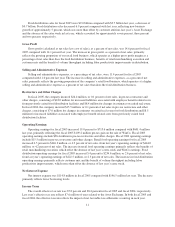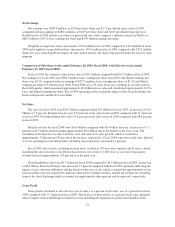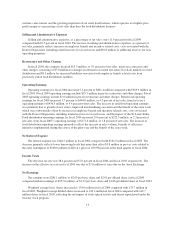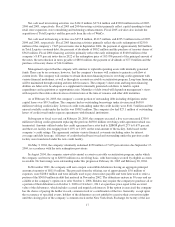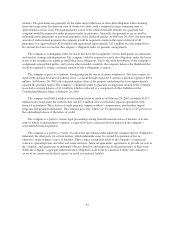Albertsons 2005 Annual Report Download - page 15
Download and view the complete annual report
Please find page 15 of the 2005 Albertsons annual report below. You can navigate through the pages in the report by either clicking on the pages listed below, or by using the keyword search tool below to find specific information within the annual report.network spans 48 states and we serve as primary grocery supplier to approximately 2,300 stores, in addition to
our own regional banner store network, as well as serving as secondary grocery supplier to approximately 700
stores. Based on revenues today, we would be ranked as the largest extreme value food retailer, eighth largest
grocery retailer, and largest public company food wholesaler in the United States.
The grocery food industry can be characterized as one of consolidation and rationalization. The grocery
industry also continues to experience store saturation driven primarily by increases in square footage devoted to
food in supercenters, club stores, mass merchandisers, dollar stores, drug stores and other alternate formats as
well as organic growth by traditional supermarket operators. As a result, same-store sales growth for the industry
has been soft, pressuring profitability levels in the industry as operating costs rise at a rate faster than sales
growth. We expect this industry environment to continue for the foreseeable future. In fiscal 2006, we anticipate
same store sales growth of approximately one percent.
The grocery industry is also affected by the general economic environment and its impact on consumer
spending behavior. We would characterize fiscal 2005 as a year with modest economic growth with relatively
normal levels of consumer spending and product cost inflation. For fiscal 2006, we expect consumer spending to
be pressured by higher fuel prices and modest food inflation.
In fiscal 2005, most businesses, including the labor intensive grocery industry, were again impacted by
another year of rising health care and pension costs. Although the rate of increase moderated in fiscal 2005, these
rising costs impacted the overall profitability levels of the food industry and have become a pivotal issue in labor
negotiations for unionized employees who bargain for health and retirement benefits in addition to wages.
Approximately 41 percent of SUPERVALU’s employees are unionized. We did not experience any strikes
during fiscal 2005. Approximately 33 percent of our unionized workforce are represented by contracts that are up
for renewal in fiscal 2006.
All of these industry factors impact our food distribution customer base. As a result, we continue to
experience customer attrition in our food distribution operations. The attrition rate in fiscal 2005 was
approximately seven percent, which is above the historical range of approximately two percent to four percent,
due primarily to three large customer transitions to other suppliers during the year. For fiscal 2006, we anticipate
the attrition rate in this business will be in the upper end of that historical range.
All the above factors will continue to impact our industry and our company in fiscal 2006.
We believe we can be successful against this industry backdrop with our regional retail formats that focus
on local execution, merchandising, and consumer knowledge. In addition, our operations will benefit from our
efficient and low-cost supply chain and economies of scale as we leverage our retail and distribution operations.
Save-A-Lot, our extreme value format, has nationwide potential, and currently operates in 39 states. In fiscal
2005 and in the future, the majority of our new extreme value food stores will be a type of combination store
offering both food and general merchandise. We plan to expand regional retail banner square footage through
selective new store growth in key markets where we have significant market share. In addition, we will
supplement regional retail store growth with continued focus on remodel activities. Given the life cycle maturity
of our distribution business with its inherent attrition rate, future growth in food distribution will be modest and
primarily achieved through serving new independent customers, net growth from existing customers and further
consolidation opportunities. Our recent acquisition of Total Logistics offers a new platform to participate in the
fast-growing logistics arena. We remain committed to streamlining our operations and improving our return on
invested capital through a variety of initiatives.
9


